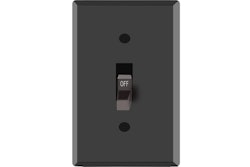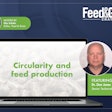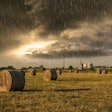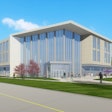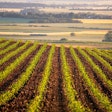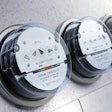Transcription of Feed & Grain Chat with Lydia Ashburn, growth associate, CarbonSpace
Elise Schafer, editor, Feed & Grain:Hey everyone, welcome toFeed & Grain Chat. I'm your host Elise Schafer, editor ofFeed & Grainmagazine. This edition of Feed & Grain Chat is brought to you by WATT Global Media and Feedandgrain.com. Feedandgrain.com is your source for the latest news, products and equipment information for the grain handling and feed manufacturing industries.
Today I'm joined on zoom by Lydia Ashburn, growth associate forCarbonSpace, a Dublin-based startup that uses satellites to track carbon footprint data for the land-use sector, including agriculture. Hi, Lydia, how are you?
Lydia Ashburn, growth associate of CarbonSpace: Doing well. Thanks for having me, Elise.
Elise Schafer, editor of Feed & Grain:Yes, thank you for joining me. Let's jump right into it. Companies from across the entire food value chain are seeking reliable carbon data these days. Can you explain how this data is typically gathered and the unique way thatCarbonSpacecollects it?
Ashburn:是的,当然。所以,我认为主要有三个ways this data is typically or historically been collected. The first would be doing direct measurements. So, in the case of agriculture, that's oftentimes soil sampling. And there are many great insights that come from soil sampling, for sure, but when it comes to the carbon data, we can help with kind of the frequency and accuracy side of things. So, we know that, at least soil sampling, or carbon can be pretty costly and labor intensive. There's just a lot of variation in some of the results you get based on which lab you send it to.
And then the second, I guess, main way that this data will often be collected or generated is just using industry calculators. These will often provide average data which can be fine for calculating other types of carbon emissions. But when it comes to agriculture, we're talking about nature and there's a lot more variation based on region and, of course, implementing new land management practices that's not necessarily going to be captured when you're using a calculator.
And then the final way is remote sensing solutions, which there's a lot more coming online and a lot of them are using satellite imagery to verify a yes/no principle. We verify this practice is implemented or, no, it wasn't — but they'll still often turn to industry averages or formulas to do a carbon calculation.
So, we're coming in on the remote side. We're using a combination of satellite data, but also a network of flux net station data, so there's a network of several — 100 of these across the world. It's been around for decades, collecting data every 30 minutes on carbon flux between the atmosphere and the ecosystem. And that's our ground truth component, if you will, so we're able to not use any averages or proxies in our data collection.
So, we're able to look at that net exchange of carbon between the atmosphere and the ecosystem and just increase accuracy and consistency of the carbon data for the specific field level, incorporating regional variation and new management practices, things like that. And then of course, decreasing the time and cost that would otherwise be necessary for on site measurements or using industry calculators.
Schafer:So, tell me how the CarbonSpace platform relays satellite data to users and what can they access from their profile?
Ashburn:For customers, we provide a personalized account, showing all the different fields, farms and forests of interest for them and depending on the type of customer we're working with. this could be just a few farms or it could be a much broader kind of look at the supply chain. And that's the beauty of a remote tool, being able to pull in fields from really anywhere across the globe that you want to monitor. So, yeah, within this account, monthly carbon emissions, sequestration data, or the land assets and negative data available since January of 2000, monthly data, and that's because, you know, we're pulling satellite imagery and station data that has been around since then.
And then at the end of each month, we update accounts with that month's new carbon emissions and sequestration data, and this is almost real time. Look at the performance at least from the carbon lens of the fields, which is pretty helpful for different producers and growers that want to maybe monitor new practices or things like that. They're getting that monthly update to see, hey, what is the carbon flux showing?
Schafer:So how can livestock producers leverage this data to better understand the impacts of their farming practices?
Ashburn:Yes, first thing is that we want this whole process to be as simple and easy as possible for the grower, producer we're working with and that's because there's already enough going on for a farmer or a livestock producer. So, we don't want to sit there and ask for 1,700 data points, so that we can then do some calculation. All we ask for is the geographic boundaries of the fields and then the land covered type, so does what's planted there.
这可以导致见解对生态系统health and other kind of interesting indicators. So, that's one piece of intelligence or insight that that our data can help for livestock producers. And then the other is we're able to capture the unique regional variations, different practice changes and things like that., so that can help say, hey, this is working for you. Or maybe this isn't giving the results that you thought it was and help, kind of, maybe redirect or indicate new things to try for producers.
And in terms of getting — kind of like I mentioned earlier with the aspect of being a remote tool — we can provide visibility to the land around barns to open grazing lands. So, where the field where manure is being applied this fertilizer, and show the fields where feed is coming from. So, we can really help provide pretty broad supply chain data for producers.
Schafer:Well, thank you for coming on and sharing a little about CarbonSpace’s unique platform today, Lydia!
That's all for today's Feed & Grain Chat. If you'd like to see more videos like this, you can subscribe to our YouTube channel, or sign up for IndustryWatch Daily eNewsletter or you can come directly to Feedandgrain.com to find videos on our website. Thank you for joining and we hope to see you next time!
In this Feed & Grain Chat, Lydia Ashburn, growth associate for CarbonSpace, explains how 20+ years of satellite imagery produces carbon emissions calculations for farms, fields and forests to help guide sustainable land practices.









